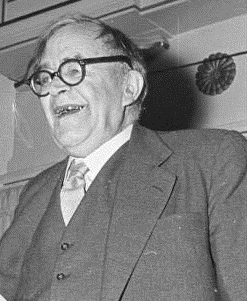
A moment’s reflection on the New Testament’s mode of reasoning should suggest that this use of “foundation” is probably some sort of rhetorical trap. Don’t the New Testament writers themselves employ the normal canons of logical necessity? And doesn’t the New Testament tacitly insist on conceptual consistency (and the consequentiality of the historical referents behind Scripture) when it holds up the actual, bodily reality of Christ’s resurrection as the sine qua non of the believer’s hope (1 Cor. 15)?[14] Any attempt to dissolve conceptual consistency would rob the force of Paul’s reasoning. Postliberals, in fact, are exalting Christ and his theological role in a way that appeals to religious sentiments, but in a way not at all in line with the New Testament. As Richard Muller explains, “We can distinguish…between the soteriological Christocentrism that belongs to any genuinely Christian body of doctrine and the principial Christocentrism that belongs to several nineteenth-century developments of the so-called ‘mediating theology’ and to Karl Barth.”[15] At any rate, a quick look at the New Testament’s use of the foundation image shows that it serves a different purpose from what postliberals seem to think.
Premium Members and Friends of JP must be signed in to view this content.
If you are not a Premium Member or Friend, please consider registering. Prices start at $5/month if paid annually, with other options for monthly and quarterly and more: Sign Up For Premium
- [1] The apostles are also imbedded within a foundation in Rev. 21:14-19. ↩
- [2] Wayne A. Grudem, The Gift of Prophecy in 1 Corinthians (Washington, DC: University Press of America, 1982), 82-84. Although I argue against Grudem's exegesis in the course of arguing against postliberalism, the reader should not mistake Grudem for a postliberal. ↩
- [3] Ibid., 90. With this chronological rendering of the foundation metaphor, Grudem is able to exclude not only the OT prophets from the themelios, but the NT prophets as well, and so, Grudem thinks, view (4) is forced upon us (ibid., 94). ↩
- [4] Ibid., 93-94. Grudem writes that the NT prophet view "fits poorly with the idea of a fixed number of members (an idea which seems inherent to the metaphor of a foundation)" (ibid., 96). But the apostolic institution as such is singular, and satisfies the metaphor very well. ↩
- [5] Grudem thinks that "the idea of chronological sequence will be evident" to those encountering the foundation metaphor elsewhere in the New Testament, listing Rom. 15:20, 1 Cor. 3:10-12, and Heb. 6:1-2 as examples ([see n. 9], 95). He also calls attention to the early Christian writing Shepherd of Hermas, Sim. 9.4.2-3, 9.12.2, 9.15.4. But it is not clear that these passages support Grudem's reading: Paul's use of the metaphor in Rom. 15:20 and 1 Cor. 3:10-15 unfolds the chronology of his missionary preaching, but the metaphor is captured there not simply through the use of themelios, but through the verbs for which themelios is the object. Rom. 15:20 and 1 Cor. 3:10-15 therefore supply evidence that themelios can be used with verbs expressing the chronological progression of the gospel (viz. of its taking root within an area), but they do not indicate that this chronological development is pent up within the foundation metaphor itself. It should further be noted that the foundation that Paul lays in 1 Cor. 3:11 is "Jesus Christ" (that is, the kerygma [see below]), which is foundational because of its continuing importance. Likewise, the author of Hebrews exhorts his readers not to lay "again the foundation of repentance from dead works, and of faith toward God, of the doctrine of baptisms, and of laying on of hands, and of resurrection of the dead, and of eternal judgment." The chronological aspect of the metaphor consists of what is done to the themelios, and not of an aspect of the themelios itself. ↩
- [6] Walter Brueggemann, Theology of the Old Testament: Testimony, Dispute, Advocacy (Minneapolis: Augsburg Fortress, 1997), 5, n. 10. ↩
- [7] An "epistemology" is an understanding of knowledge. An "alethiology" is an understanding of truth (as distinct from knowledge). ↩
- [8] Ernst Käsemann, New Testament Questions of Today (London: SCM, 1969), 261-62. Admittedly, Käsemann's wording depends upon a "theology of the Word," and to that degree, I must disagree with him. The theology of the New Testament is not a theology of the Word. ↩
- [9] Quoted in Marjorie O'Rourke Boyle, Erasmus on Language and Method in Theology (Toronto: University of Toronto Press, 1977), 28. ↩
- [10] See my article, "Authorial Intention as Old as the Hills," Stone-Campbell Journal 7 (2004): 59-72. ↩
- [11] It is revealing that prominent North American faculties that warmly embrace postliberalism (e.g., Duke, Princeton, Yale) hire their New Testament instructors almost exclusively from North American ranks, while those that have been more resistant to this way of thinking (e.g., Harvard, Chicago) hire their senior New Testament professors almost exclusively from Europe. ↩
- [12] This charge is explicitly made in Stanley Hauerwas, “The Church’s One Foundation is Jesus Christ Her Lord; Or, In a World Without Foundations: All We Have is the Church,” in: Stanley Hauerwas, Nancey Murphy, and Mark Nation (eds.), Theology Without Foundations: Religious Practice and the Future of Theological Truth (Nashville: Abingdon, 1994), 143-62. ↩
- [13] See Joachim Jeremias, art. “γωνία, κτλ.,” Theological Dictionary of the New Testament (Grand Rapids: Eerdmans, 1964), 1:791-93. ↩
- [14] This is all argued clearly and forcefully in Paul J. Achtemeier, “Is the New Quest Docetic?” Theology Today 19 (1962): 355-68 (available online at http://theologytoday.ptsem.edu/oct1962/v19-3-article3.htm). ↩
- [15] Richard A. Muller, “The Barth Legacy: New Athanasius or Origen Redivivus? A Response to T. F. Torrance,” The Thomist 54 (1990): 673-704, esp. 685. (Note: “principial” is not misspelled.) ↩


